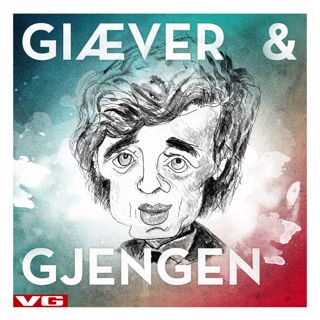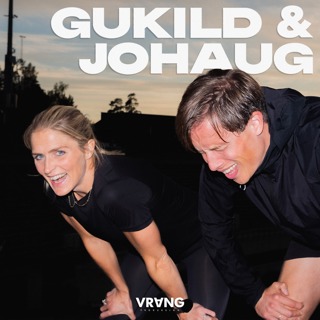
Capris Cool Tricks: How to Pull Off the Timeless Look Next Year
As we move forward into 2024, the fashion scene is set to continue its love affair with a classic piece of apparel: capri pants. Surprisingly versatile and effortlessly chic, capris are solidifying their stay as a staple in closets around the world, proving they're not just a passing trend.Capri pants, which typically end just above the ankle or mid-calf, first soared in popularity in the 1950s and 60s, symbolizing a blend of rebellion and sophistication. Fast forward to today, they are making a formidable comeback, transcending generations with their unique blend of retro charm and modernity.Fashion enthusiasts adore capris for their ability to blend with various styles and occasions. Whether opting for a casual look with sneakers and a t-shirt or elevating them with high heels and a blazer for a more formal setting, capris offer a breadth of versatility. What's more, they are suitable for all body types, making them an inclusive fashion choice, and are available in a myriad of materials, from denim to silk, catering to both comfort and luxury.In 2024, the fashion world is seeing an innovative twist on how to style these mid-length trousers. Designers are experimenting with bold patterns and vibrant colors, moving away from the traditional neutrals. There is also a significant leaning towards sustainable fabrics, mirroring the global shift towards eco-friendly fashion solutions.One key factor to rocking capris is paying attention to proportion and silhouette. Styling capris with a tailored top or a fitted jacket can enhance the body's shape and create a more flattering look. Accessories also play a crucial role; a statement belt or a chic pair of sunglasses can elevate the outfit significantly.In conclusion, capri pants are proving to be a resilient trend in the fast-evolving fashion landscape of 2024. With their unique ability to adapt to different styles and their continuing reinvention by designers, capris are a smart addition to any wardrobe, promising wearability, style, and comfort for years to come. As we continue to witness their evolution, it's clear that capris are much more than a nostalgic nod to the past; they are a forward-looking fashion essential that celebrates both heritage and innovation.This content was created in partnership and with the help of Artificial Intelligence AI
1 Jun 20242min

Pre-Loved Goods Power eBay's Resale Revolution
In a bold move to capitalize on the surging trend of recommerce, eBay is stepping up its fashion game by integrating advanced artificial intelligence to enhance the shopping experience for pre-love luxury goods. This trend, which has seen increasing popularity among environmentally conscious and budget-savvy consumers, focuses on the resale of luxury items like high-end watches, sought-after handbags, and premium sneakers.Recommerce, or reverse commerce, involves selling previously owned products through platforms that offer these items a second life, aligning perfectly with growing consumer demand for sustainable and ethical fashion choices. EBay, a pioneer in the online retail space, has noted a significant uptick in the sales of such items on its platform. This resurgence is largely driven by a shift in consumer behavior, where there is a growing preference for sustainable fashion over buying brand-new products. To optimize this trend, eBay has been proactive in using artificial intelligence to streamline searches, authenticate products, and personalize user experiences. Such technological advancements not only enhance the functionality and user-friendliness of eBay's platform but also build trust among consumers by ensuring the authenticity of high-value items.The appeal of recommerce in the fashion industry is not just about affordability but also contributes significantly to sustainability. By recycling and reusing garments and accessories, the environmental impact of manufacturing new products is greatly reduced. This not only helps in extending the lifecycle of products but also decreases the waste and the carbon footprint associated with the production of new items.Moreover, eBay’s focus on luxury items like watches, handbags, and sneakers taps into another significant trend: the democratolutelyization of luxury fashion. Through its recommerce efforts, eBay provides access to luxury for a broader audience at lower price points, which disrupts traditional barriers in the luxury market.As recommerce continues to grow, platforms like eBay are likely to further innovate, potentially incorporating more robust AI and machine learning technologies to enhance predictive capabilities, making shopping for pre-owned luxury goods not just a necessity but a preference. The burgeoning trend signifies a shift towards more conscious consumerism, and eBay’s pioneering efforts may well set the standard for the future of sustainable fashion retailing.This content was created in partnership and with the help of Artificial Intelligence AI
31 Mai 20242min

Gabrielle Union Makes Y2K Sheer Red Carpet Approved
The timeless allure of sheer fashion has found a remarkable muse in Gabrielle Union, whose impeccable sense of style continues to influence and inspire fashion enthusiasts globally. Union's recent spin on the sheer trend, infused with Y2K influences, marks a pivotal moment in fashion, merging nostalgia with contemporary aesthetics.In the early 2000s, fashion was dominated by bold elements—think visible logos, the extensive use of denim, and, importantly, the incorporation of sheer materials in everything from casual wear to haute couture. Gabrielle Union, revisiting this iconic era, has skillfully blended the sheer trend with modern sensibilities, creating looks that are both evocative and fresh.At a high-profile event, Union was seen donning a masterfully crafted ensemble that pays homage to the sheer trend of the Y2K era while making it utterly relevant for today's fashion scene. The outfit featured a delicate, sheer blouse with intricate detailing and a lavish pattern that aligns with the opulence typical of the era. Paired with a high-waisted skirt that balanced the revealing nature of the top, the overall effect was both elegant and daring—an emblematic trait of Union’s style.This ensemble not only highlights Union’s ability to adapt and honor past trends but also showcases her role as a trendsetter in the fashion industry. She plays with transparency in a way that is neither excessive nor subdued, striking the right chord between sexy and sophisticated. This look, like many others championed by Union, sparks a discourse on the evolving nature of femininity and empowerment in fashion.This content was created in partnership and with the help of Artificial Intelligence AI
30 Mai 20241min

Première Vision Powers China's Ascent on the Global Fashion Stage
As Chinese fashion brands carve out their space on the global stage, industry dynamics are undergoing a significant transformation. A noteworthy catalyst behind this shift is the premiere of Première Vision, a reputable trade fair which is set to showcase three emerging trends crucial for industry players and observers alike.Première Vision plays a pivotal role in empowering Chinese brands, providing them with an international platform to showcase their designs and innovations. As more Chinese brands participate in global exhibitions like this, they gain unprecedented access to new markets, buyer networks, and collaborative opportunities, which are essential for international expansion and competitive positioning.The exhibition's focus on the latest fashion trends not merely highlights aesthetic shifts, but also encapsulates broader movements in sustainability, technology integration, and consumer behavior patterns. For Chinese fashion brands, understanding and incorporating these trends is key to appealing to a global audience and establishing a foothold in competitive markets. As these brands adopt and adapt global fashion trends, they not only contribute to the diversity of offerings but also reflect China’s growing influence in the fashion industry at large.Moreover, Première Vision offers a stage for these brands to not only follow trends but also set them. By engaging with global leaders in fashion, participating in panel discussions, and presenting their collections, Chinese designers and brands can influence the fashion agenda and emerge as trendsetters.This strategic participation underscores a larger, more dynamic shift within the fashion ecosystem, marking an era where Chinese fashion brands are not just participants but influential protagonists in the narrative of global fashion. The insights and exposure garnered from events like Première Vision are invaluable, propelling Chinese brands towards sustainable growth and innovation in the global fashion arena.This content was created in partnership and with the help of Artificial Intelligence AI
29 Mai 20242min





















